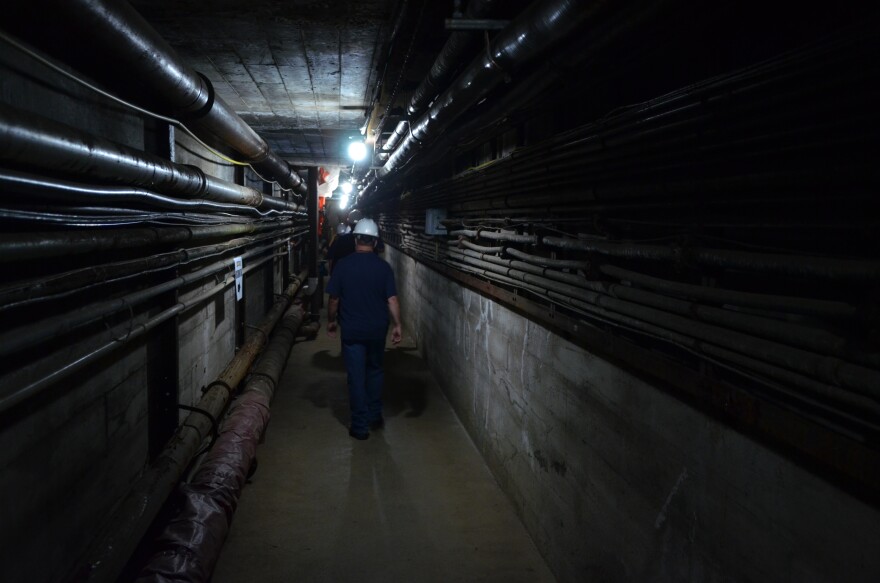The attached interviews are from SDPB's daily public affairs show, In the Moment, with Lori Walsh.
Advances at the Sanford Underground Research Facility in Lead — including one experiment that recently got underway — may give physicists insight into the building blocks of the universe.
The facility, previously a gold mine, houses experiments including the LUX-ZEPLIN (LZ) Dark Matter Experiment and the Deep Underground Neutrino Experiment (DUNE).
“The most sensitive dark matter experiment in the world”
The LZ Detector came online two months ago. It’s used to look for dark matter, a theoretical concept whose physical evidence has eluded physicists for decades. Hugh Lippincott is the spokesperson for the experiment.
“Nothing we see in space and astrophysical observations makes sense if you don’t include a component of dark matter,” Lippincott said. “It’s this critical component of how our universe got to be the way it is, but we’ve never actually seen what it is itself.”
Physicists at the facility are trying to prove a theory about the basic nature of dark matter.
“Our primary hypothesis is that dark matter is a particle. If this hypothesis is correct, then our galaxy is suffused with dark matter particles,” said Lippincott. “It’s a new type of particle that’s never before been seen in physics.”
Physicists hope that a dark matter particle will “bang into” their detector, which Lippincott says is “basically a giant bucket of xenon.” The density of xenon means it can block environmental radiation. When it’s hit with a particle, the xenon will create flashes of light that can be detected by the researchers.

The LZ detector is a larger version of an earlier experiment that failed to prove the existence of dark matter. Preliminary data collected this year showed that the new detector is the most sensitive in the world. But Lippincott says they can’t be sure it’ll be successful this time.
“There’s no guarantee,” he said. “I think it’s less than a 50/50 shot, just because there’s lots of other possibilities and this is only one of them.”
If they do find evidence of dark matter, he says, “someone goes and collects a Nobel Prize.”
The experiment will collect data over a five-year period. A similar program is underway at a site in Italy.
Deep underground neutrino detection
Along with the search for dark matter, scientists are also constructing a project to detect neutrinos. Workers are excavating rock from caverns in the facility to prepare for the experiment.
“The scale of this excavation is really incredible,” said Mike Headley, executive director at the Sanford Underground Research Facility. “If you can imagine a loaf of bread that’s 500 feet long, 90 feet tall, 60 feet wide, that’s really the size of one of the two caverns.”
The experiment will help scientists learn about neutrinos, which are tiny subatomic particles.
“We’re going to understand much more about the particle itself, but also the role it plays in the universe,” said physicist Claire David.

Bunches of neutrinos will be fired from a facility in Chicago. The particles will then travel 800 miles through the underground rock to Lead.
“If we study them near the production of the beam, near Chicago, and then at SURF after this 800-mile journey, we will see how much they change flavors over time,” David said. “That brings us lots of answers about their behavior and the physics.”
The neutrinos will make the journey in less than a second.
The experiment will also be sensitive to particles released by astronomical events, such as supernova explosions.
“It’s actually a telescope underground,” David said. “It is good to put it in the ground, shield it from the background [radiation] that we don’t want, and then do astronomy from there.”
The project will be used to test theoretical physics ideas related to neutrinos. David said experimental findings could be compared to results from a similar facility in Japan, which has a different design.
Excavation is expected to be completed in 2024. The project won’t be fully operational until the 2030s.




